Entertainment was evolving beyond live performers on a stage. A spate of inventions led to the recording of performances both in sound and picture. These innovations started a revolution in the way we amuse ourselves. No longer were people dependant on the family piano or folk enjoying a sing along, for we could now enjoy the work of musicians and actors from around the world.
Though the phonograph (record player or gramophone) was conceived in 1877, it would be many more years before the recording industry became a major factor in home entertainment, hence live music remained dominant until records were of reasonable quality and could be mass produced in a form the public preferred.
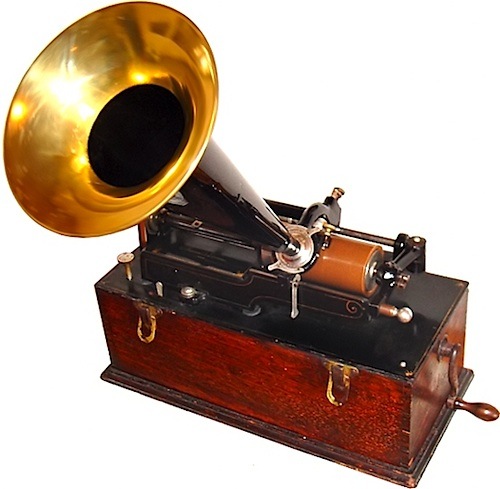
The Edison cylinder phonograph used of wax-coated cardboard cylinders, and a cutting stylus that moved from side to side.
Edison’s team were prolific innovators taking ideas, turning them into reality and marketing the new gadgets with great success. They may not always have been the first, but they had a way of creating enthusiasm among the public, as each novelty was released. Some items that started out as little more than that, soon became a growth industry. Everything from the incandescent light bulb, public electricity generation, record players, movie cameras and projectors and movie production. Edison held 1,093 patents for a wide variety of inventions in an effort to monopolise the revenue generation of the many concepts. Like Bill Gates and Microsoft became dominant in the computer software sphere, as Edison had a century before with pioneering entertainment technologies. Both had the vision to identify a product that had a potential need, generate demand for it, and have outstanding success selling it. A hot example of yesteryear, was the novelty of moving pictures, which caught the public imagination to such an extent that it attracted large crowds to amusement arcades, just to view brief snippets of film in a Kinetoscope. Lots of people viewing peep shows soon produced a substantial profit. A profit to grow even more once the solitary viewing of a Kinetoscope was given a larger audience with a full theatre of paying patrons sharing the same experience at one sitting, courtesy of a projector.
About 1890, the Edison laboratories developed a movie camera, the Kinetograph, where the first incarnation was far from portable. The first motion picture to be copyrighted in the United States was in 1894 and was five-seconds of footage of an Edison employee, Fred Ott taking a pinch of snuff, then sneezing. Its formal title is Edison Kinetoscopic Record of a Sneeze.
Fred Ott’s Sneeze
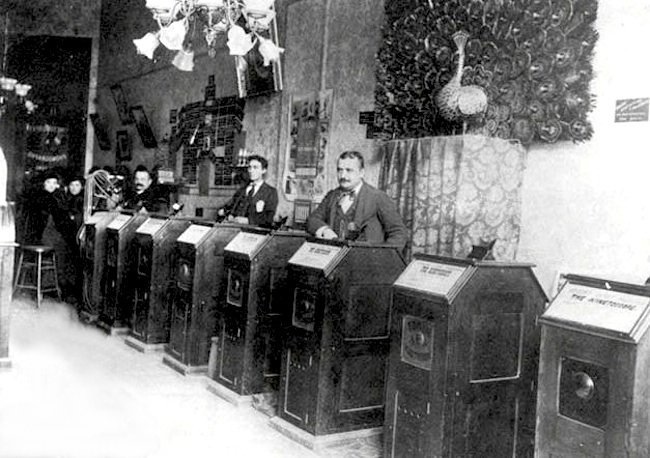
The first Kinetoscope Parlors began opening from 1894
The Edison Manufacturing Company developed its own projector known as the Projectoscope or Projecting Kinetoscope in November 1896, and exhibitors could choose the films they wanted from the Edison inventory and sequence them in whatever order they wished.
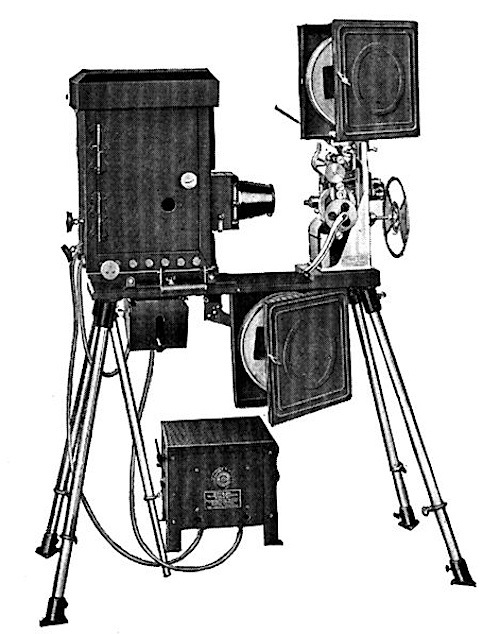
By the turn of the century, motion pictures became a popular attraction in variety and vaudeville theatres in major cities across the world. The Edison Manufacturing Company was one of many to develop working projectors and produce films from as early as 1896. His camera enabled the company to film everyday scenes outside a studio in a fashion similar to the French Lumière films. The films contained scenes of vaudeville performers, notable persons, railway trains, scenic places, foreign views, fire and police workers, military exercises, parades, naval scenes, expositions, parades, and sporting events.
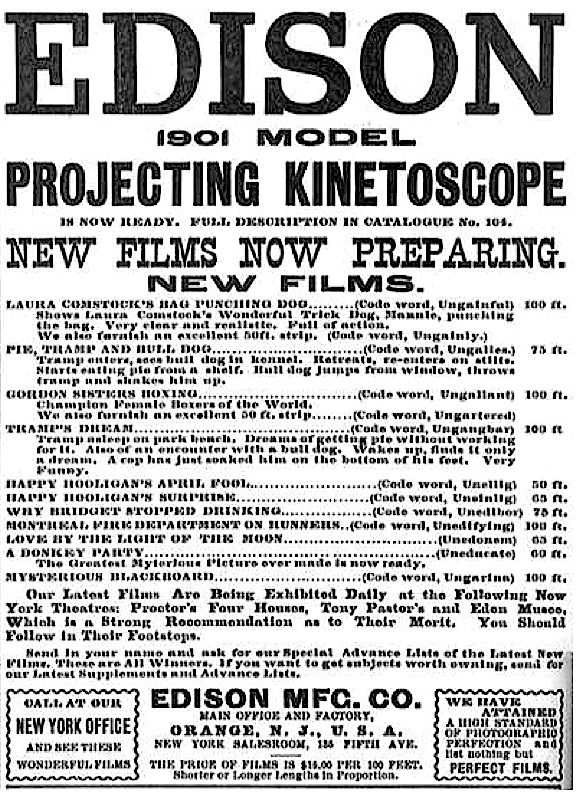
1901 range of films for the Projectoscope or Projecting Kinetoscope
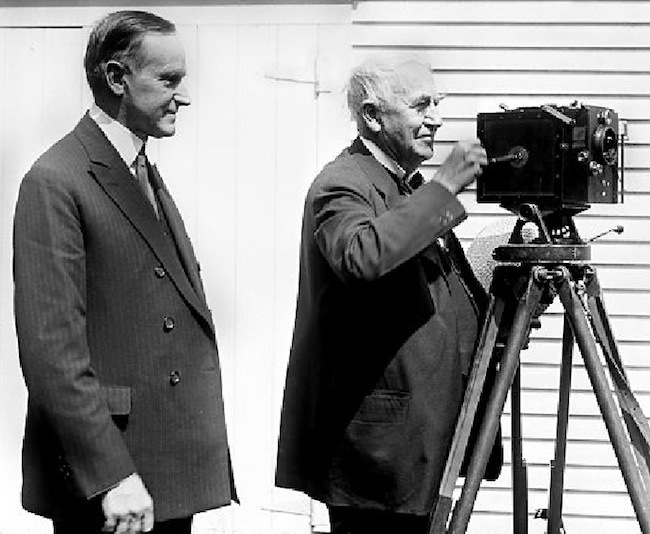
1920’s photo showing US President Calvin Coolidge looking on as Thomas Edison operates his first generation portable movie camera
Edison was not only pioneering moving imagery but also engaged in early sound reproduction techniques, even trying to marry the two together. The synchronisation was achieved by connecting the projector with the phonograph by a pulley system.
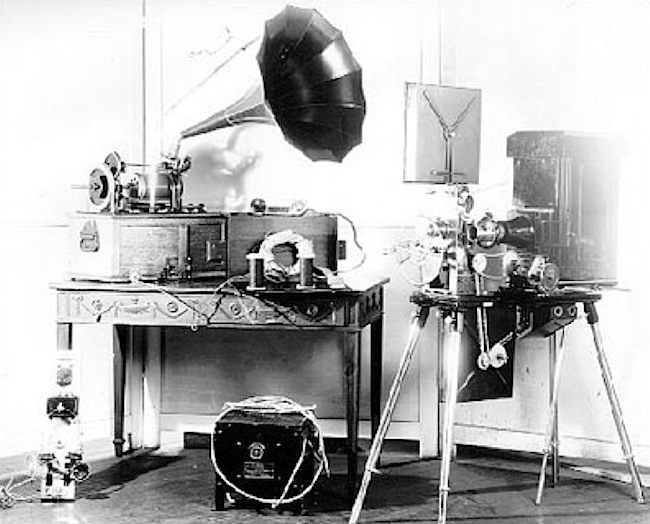
In 1913, nineteen talking pictures were produced and the Kinetophone introduced as an attempt to synchronise motion pictures with a phonograph cylinder recording. He basically supplied Kinetoscopes with a phonograph inside each cabinet, but by 1915 Edison had abandoned the idea.
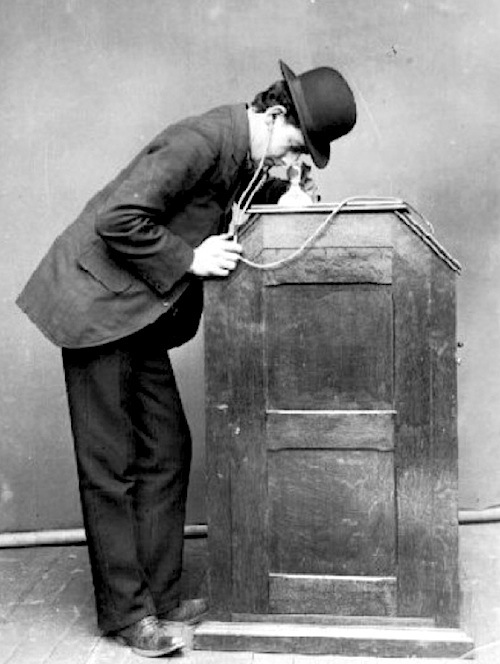
The Kinetophone consisted of a Kinetoscope with earphones wired up to a cylinder phonograph within the cabinet.
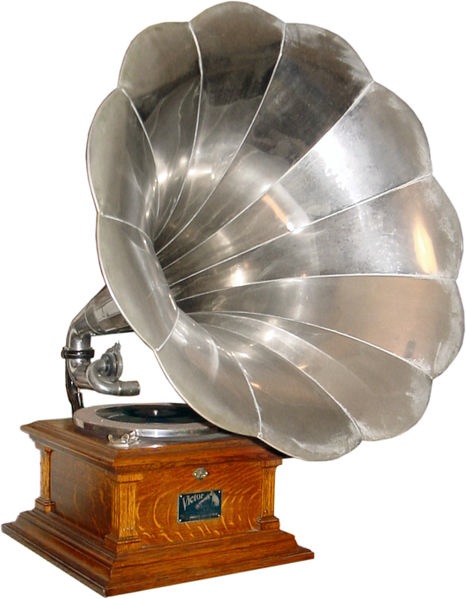
Disc recordings were more practical than using cylinders as they were easier to manufacture and more convenient to store. They could also be double sided and this format remained popular through the 20th century as it evolved to micro-groves, high fidelity and stereo recordings. The early machines used a steel needle that required regular replacement. The ABC radio stations replaced the needle after every playing. Sapphire and diamond needles were more resilient and became the norm as the technology evolved.
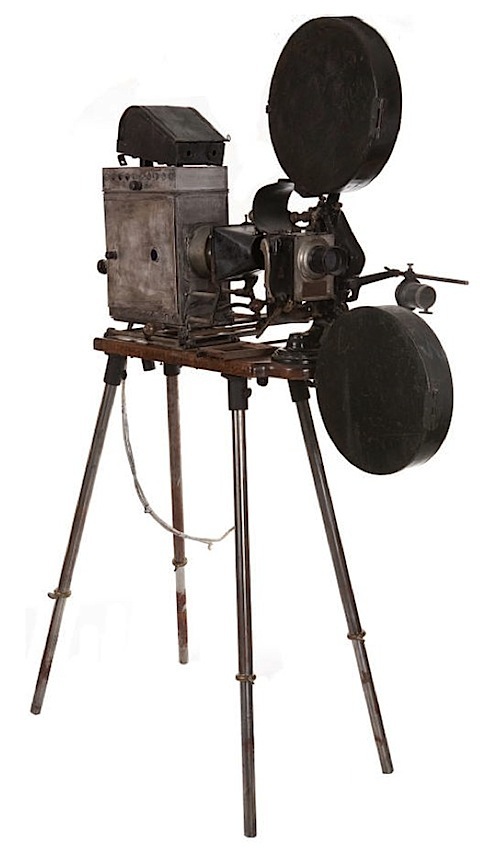
In 1896, motion pictures were first screened at the outdoor garden variety venue of Ye Olde Englishe Fayre at the corner of Hay and King Streets, the site of the present His Majesty’s Theatre. Three weeks later, the second venue in Perth opened which would complement their traditional vaudeville performances with a five week season of films. This was the Cremorne Gardens, which from 1904 was known as the Palace Gardens Theatre and became the most popular place of outdoor entertainment in Perth, until it closed about 1914. The theatre was attached to the Westralia Hotel (formally the Horse and Groom Hotel) in Murray Street and situated behind the Criterion Hotel. The site later was used as a boxing venue then became the YMCA.
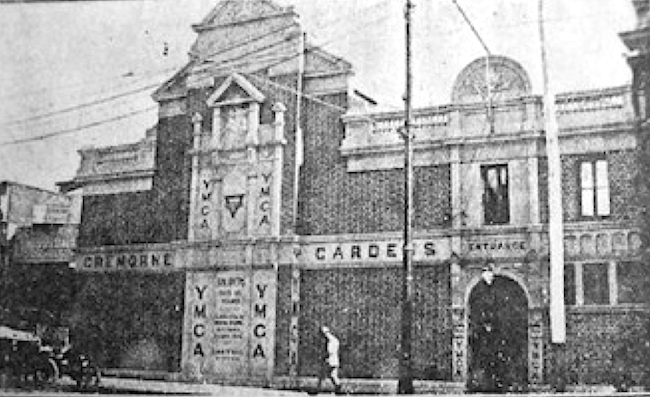
The Cremorne Arcade, running through from Hay St to Murray Street, became the theatre entrance in 1897.
The Royal Theatre in central Hay Street, opened in 1897, to be the first purpose-built establishment in Western Australia used to stage live theatre productions, as opposed to the popular form of variety entertainment provided by the vaudeville venues, which featured a mixture of specialty acts such as musicians, dancers, comedians, trained animals, magicians, female and male impersonators, acrobats, illustrated songs, jugglers, one-act plays or scenes from plays, athletes, lecturing celebrities, minstrels, and early movies.
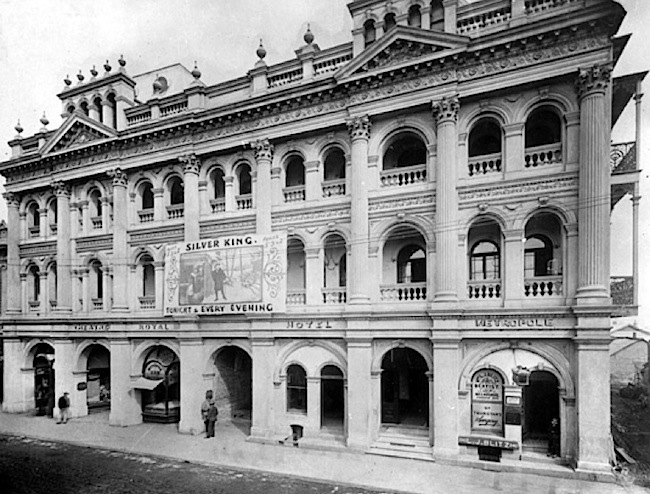
Royal Theatre in Hay Street – 1897
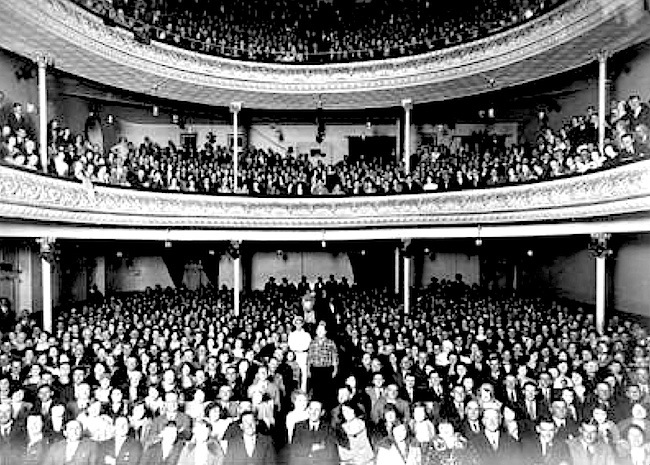
Royal Theatre auditorium in 1930
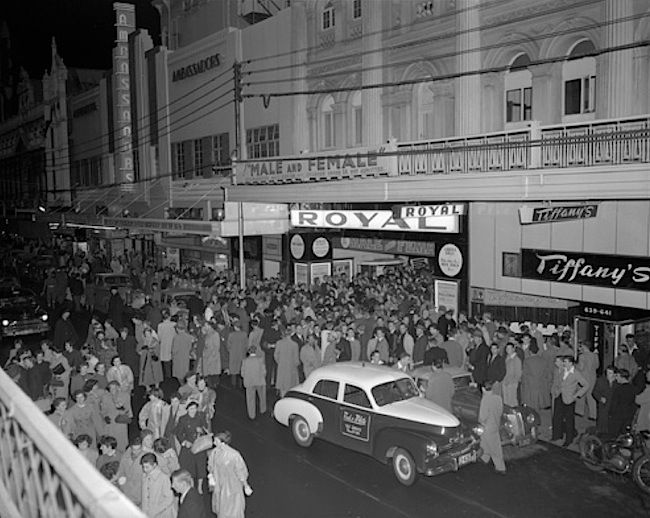
Cinema crowds outside Royal and Ambassadors in 1955
Motion picture films soon appeared at the Queen’s Hall in William Street in 1899, which was replaced with Hoyts Regent Theatre in 1927, and then again by the Metro Theatre in 1938, all at the same address.
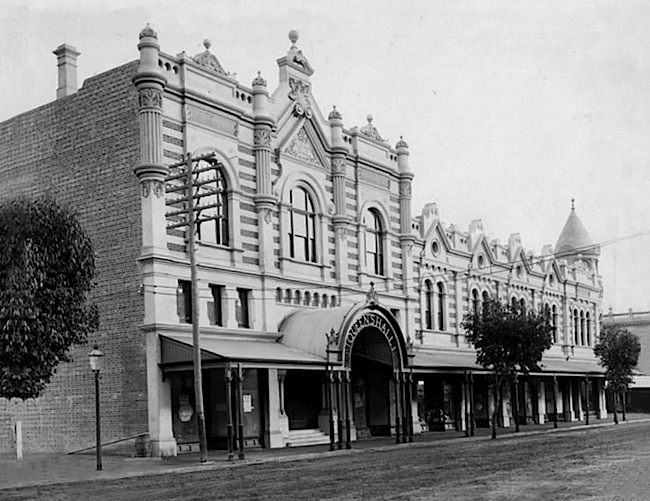
Queen’s Hall in William Street – 1899
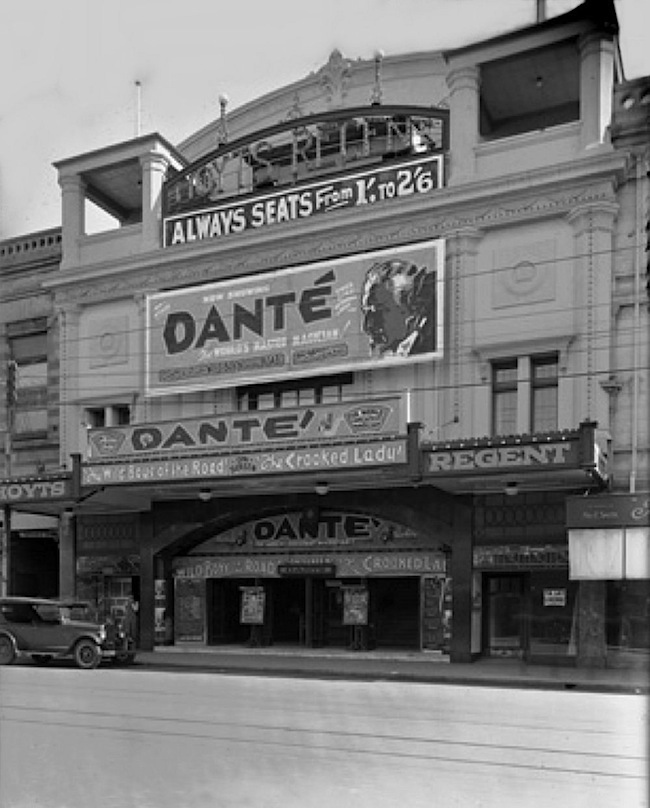
Regent Theatre opened in 1927
(on the site of Queen’s Hall in William Street)
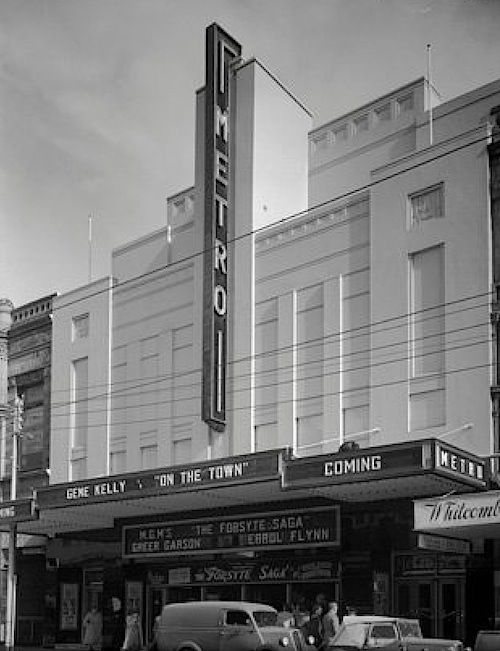
Metro Theatre opened in 1938 (on the site of Queen’s Hall in William Street)
Richard Ashton provided much input and guidance in the compilation of this essay, Gordon McColl assisted in field trips and library research with Richard. Also appreciate the help provided by Dr Peter Harries, and Ian Stimson. Conversations with Coralie Condon, Audrey Long and Rick Hearder are highly valued, as they reminisced about the topic.
INDEX: Factors that moulded entertainment in Perth







